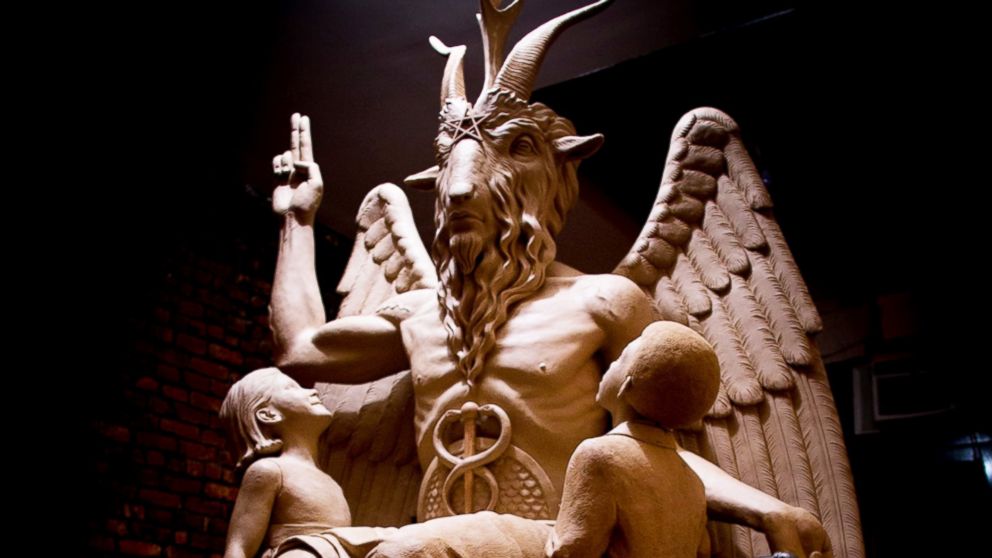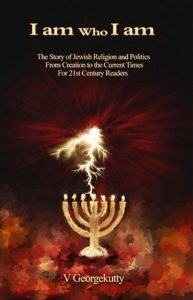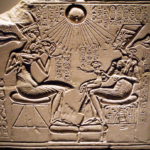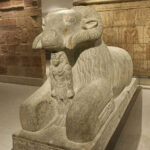“I think it’s perfectly possible to explain how the universe came about without bringing God into it, but I don’t know everything, and there may well be a God somewhere, hiding away. Actually, if he is keeping out of sight, it is because he is ashamed of his followers and all the cruelty and ignorance they are responsible for promoting in his name. If I were him, I’d want nothing to do with them.”
Introduction
Charles Dickens starts his novel, ‘The Tale of Two Cities’, saying, “It was the best of times, it was the worst of times, it was the age of wisdom, it was the age of foolishness, it was the epoch of belief, it was the epoch of incredulity, it was the season of Light, it was the season of Darkness…in short, the period was so far like the present period”.
Although penned over one and a half centuries ago, these words seem to ring so true even in the twenty first century in which we live. We now live in the best of times, thanks to the amazing advancements in the fields of science and technology. At the very same time, we are living through the worst of times of mind numbing bestiality reminiscent of the dark and diabolic medieval ages. On the one hand, the emphasis of our times is on a scientific temperament. On the other hand, rising levels of religious obscurantism seems to be dragging us back into the primitive days of the barbarians.
Every religion essentially preaches peace and tolerance. However, the reality we encounter today is that no religion remains peaceful or tolerates views even remotely critical of the fundamentalist versions of its dogmas. The history of religions is drenched in blood. It is replete with instances of wars waged by the faithful on earth on the command of their god residing in heaven. Religious fanaticism has been killing millions of innocent men, women, children, infants and animals. Religions founded on the principles of love, compassion and goodwill have turned on its head to emerge as instruments of death, desolation and destruction. This infernal madness in the name of faith seems to be increasingly gathering strength despite all the cultural and scientific advancements with which we credit ourselves.
We learn from history that three religious faiths that together covers more than half the population of today’s world have been in the forefront of using the alibi of divine will to commit atrocities against humanity. These religions have come to be called ‘Abrahamic Religions’ in view of the claims advanced by all three to the ancestry of the Biblical Patriarch, Abraham. This post seeks to present a brief review of the history of these three religions with focus on understanding how violence became integral to the fundamental nature of Abrahamic religions preaching a loving God.
As we all realize, religion is a highly sensitive subject today. Our religious sensitivities seem to have turned exceedingly brittle and aggressive in spite of the masks of modernity we sport. Consequently, any discussion on religions is a risky venture. It is, therefore, essential for me to make it clear here that this is not an attempt to evaluate the merits or otherwise of any faith or to pass judgement. This is only a humble attempt to share information that I have gleaned from various sources so that readers not conversant with the matter would be in a better position to appreciate the history behind some of the faith related conflicts we have been witnessing today. It is my commitment to be objective in what I write. I shall be obliged if readers would kindly let me know of any errors, aberrations or objections to any part of the content of this post so as to enable me make appropriate amends.
It would be foolish for me to attempt to condense the eventful histories of Abrahamic Religions spanning over 4000 years into a single blog post. My limited goal here is to present a brief overview of some of the critical events in the history of these religions in order to enable the reader obtain an insight into the circumstances that led to these religions turning, what is often termed, ‘Religions of the Sword’. Even this limited examination would need an estimated fifteen thousand odd words, which would be tedious for the average reader if presented as a single post. I have, therefore, discussed the topic in FOUR parts. This part (Part-I) carries a brief general introduction to Abrahamic Religions. Parts II, II & IV carry short reviews of the history of Judaism, Christianity and Islam respectively.
The Abrahamic Religions
Judaism, Christianity and Islam trace their roots to Abraham, the first of the three Biblical Patriarchs (His son Isaac and grandson Jacob are the other two). But, Abrahamic ancestry is not the only common characteristic of these three religions. For instance, all these are monotheistic religions (religions believing in a single God). All three, starting with Judaism, originated in the Middle East. Christianity and Islam are considerably influenced by the Jewish history and scripture (Old Testament Bible). The Old Testament is part of the Christian Bible. The people, places and incidents in the Bible find mention in the Islamic Scripture (The Holy Koran). The Islamic scripture accommodates and respects all the prominent patriarchs and prophets of the Bible. The Holy Koran accepts Jesus too, although not as the ‘Son of God’ as believed by Christians, but as a Prophet and the son of Joseph and Mary. Jerusalem is a holy land for all three religions. All these three religions have a firm apocalyptic theme i.e. a belief that at the end of times God will finally impose His kingdom upon the earth. All three religions have developed what can be called socialisticideologies. As exiles in the Roman Empire, the Jews had developed what could be described as first social welfare system. The kibbutz that came up in modern Israel is a way of community living through the sharing of resources and responsibilities by the whole community operating as an integrated unit. Jesus Christ and Prophet Mohammed stood resolutely on the side of the poor and the oppressed and fought the corrupt and unjust establishment. Both were, therefore, revolutionariesin their own distinct ways. Thus, all three Abrahamic religions have, what may be described as, a revolutionary streak. And, of course, the histories of all these three religions are also drenched in blood.
The Jewish scripture (The Old Testament Bible) is replete with divine exhortations to go, kill and burn the enemies of Israel (Hebrew/Jew). For instance, God commanded Saul, the first king of the Hebrew people, “Now go and smite Amalek, and utterly destroy all that they have, and spare them not; but slay both man and woman, infant and suckling, ox and sheep, camel and ass” (1 Samuel 15:3).The tendency of the other Abrahamic religions to kill in the name of the divine seems to be a legacy of its Judaic ancestry. Eventually each Abrahamic religion started slaughtering not only the enemies of their common ‘Abrahamic God’ but also one another. The massacres did not even end with that. When sectarian divisions emerged within these religions, they started killing people within its own fold. For example, in Christianity the Catholics and Protestants killed each other. In Islam, the Sunnis and Shiites killed each other. And the killing continues. Such bloody campaigns among the Abrahamic religions have turned Jerusalem, their common holy city, the most blood splattered piece of real estate on the face of earth.
But the paradox is that none of the three faiths had started as ‘Religions of the Sword’. None had supported or promoted violence. This is particularly so in the case of Christianity and Islam. The wars on the command of god in heaven started with Judaism. Eventually, other two faiths that emerged out of the Judaic legacy seem to have fallen inescapably into the rut of unmitigated violence of its classic Judaic traditions.
It appears that the inherent inclination of all three religions to reach for the sword in the name of the divine has been largely influenced by its monotheistic faith. Historical monotheism apparently entered the world in a formal and unequivocal way through Abraham. And it emerged in the midst of people who worshipped pantheons mostly represented in idols. For a population that lived on the produce of the land, fertility and nature deities were critical. The agrarian population, therefore, conceived, created and worshipped a plethora of fertility deities. The term Baal was used during the Old Testament period as common term for these deities. There was also as assortment of other gods.
The idea of monotheism apparently gave its proponents some kind of an air of supremacy over those worshipping a myriad of gods. And the devotees of Abrahamic God believed that they were different and their God was the only true God. While all other gods were conceived and created as idols by the hands of men, the God of the Hebrews strictly prohibited the making or worshipping of images. One of the Ten Commandments given by God to Moses at the Biblical Mount of Sinai said, “You shall not make for yourself an image in the form of anything in heaven above or on the earth beneath or in the waters below. You shall not bow down to them or worship them…” (Exodus 20: 4-5).
The God of Moses and Abraham wanted unqualified submission of His people to His commands. Regarding the consequence of disobedience, God had told His people, “But if you will not listen to me and will not do all these commandments, if you spurn my statutes, and if your soul abhors my rules, so that you will not do all my commandments, but break my covenant, then I will do this to you: I will visit you with panic, with wasting disease and fever that consume the eyes and make the heart ache. And you shall sow your seed in vain, for your enemies shall eat it. I will set my face against you, and you shall be struck down before your enemies. Those who hate you shall rule over you, and you shall flee when none pursues you” (Leviticus 26: 14-17).
Monotheism brought in its wake a great divide among the population of the Old Testament times. On the one side of the divide were the descendants of Abraham who claimed to be the chosen people of their true God. On the other side were the rest of the population that worshipped Baal and an assortment of other deities. These people were bracketed together by the Hebrews under the umbrella term ‘Gentiles’.
For the Jews, the Gentiles were Infidels. And they suddenly started looking down upon the whole non-Jew population as an inferior lot. The Jews condemned Baal and all other gods and goddesses as false gods. All other gods and its worshippers became the enemies of the God of their Patriarchs. This led to the belief among the Hebrews that their God willed that they exterminate His enemies. Thus, for the Jews, campaigns to annihilate non-Jews became wars ordered by the divine and hence ‘Holy Wars’.
The Old Testament Bible says that God had told Abraham, “I will make you into a great nation, and I will bless you; I will make your name great, and you will be a blessing” (Genesis 12:2). This promise made the descendants of Abraham (starting with the Hebrews) to consider themselves as the chosen people of their God. The term ‘nation’ as used in the promise of God to Abraham encompassed both the spiritual and the temporal. On the spiritual plane, the descendants of Abraham were an exclusive body of worshippers of their monotheistic God. They would have no god other than the God of Abraham. And they were covenanted to be wholly submissive to his commandments. Their God spoke to His people through His prophets. At the temporal level, the term ‘nation’ denoted an earthly nation ruled in accordance with the commandments of God. In monotheism, there is only one God. Thus, the universe and everything in it belonged to that one God who in the case of all these three religions is the Abrahamic God.
God said to Abraham, “Lift up now your eyes, and look from the place where you are, northward and southward and eastward and westward; for all the land which you see, to you I will give it, and to your ancestry for ever. And I will make your ancestry as the dust of the earth; so that if a man can number the dust of the earth, then shall your ancestry also be numbered. Arise and walk through the land in the length of it and in the breadth of it; for to you I will give it” (Genesis 13: 14-16). Thus, God had given all the lands to Abraham and his descendants. Therefore, the descendants of Abraham took the view that those not belonging to the ancestry of Abraham had no legitimate claims on any land. The descendants of Abraham, therefore, assumed it to be their God given right to slaughter the ‘infidels’ and take over their lands. The killings for control over the lands thus started with the Israelites. The same view was later adopted by Christians and Muslims. Thus, ‘Holy Wars’ gained legitimacy in all Abrahamic Religions.
One of the Ten Commandments that God gave to Moses at Mount Sinai said, “You shall not murder” (Genesis 20:13). Yet the history of Judaism is full of instances of wanton bloodshed. The butchery started in earnest after God promised to give Abraham and his descendants a territory named in the Jewish scriptures as ‘Canaan’. The Israelites started slaughtering the occupants of the ‘Promised Land’ for securing control over it. Incidentally, history would repeat itself more than once to culminate in the 20th century formation of the modern nation of Israel roughly in the Biblical ‘Promised Land’ of Canaan.
Some two thousand years ago, Christianity took birth from the roots of Judaism. Jesus belonged to the bloodline of Abraham and King David. But at the core of the Gospel preached by Jesus was love, forgiveness and sacrifice. And the Gospel went far beyond the Old Testament Commandment of “Thou shalt not kill”. Jesus had taught, “….Love your enemies and pray for those who persecute you” (Mathew 5:44). He told, “Do not store up for yourselves treasures on earth, where moths and vermin destroy, and where thieves break in and steal”. Yet, the war over land and earthly treasures continued more viciously with the Christians. The Christians campaigns for land were not restricted to the conquest of any specific territory. The Christian wars for occupation were all out global wars. Thus, the colonial Britain had come to occupy an empire where, so to say, the sun never set.
Islam had evolved as a religion of Peace. (The word Islam is derived from the Arabic root “Salema” meaning peace, purity, submission and obedience). But during the lifetime of the Prophet itself, the Islamic temperaments had shifted from that of peace to one of war and bloodshed. A few centuries later, the world witnessed the wars of conquest unleashed by Islamic invaders. They conquered territories, founded great empires and carried out religious conversions in massive scales.
By the latter half of the twentieth century, massacres in the name of faith seemed to have mostly disappeared from the global scene except for the Palestinian animosities between the Arabs and Israelites. But killings in the name of faith have returned with redoubled vigour and viciousness in many parts of the world. The 1992-95 war in Bosnia, pitting Christian Orthodox Serbs against Bosnian Muslims and Croatian Catholics, left more than 100,000 people dead and millions homeless. Twenty years ago in July 1995, Serb troops overran the Muslim enclave of Srebrenica under the protection of the UN troops, killing some 8,000 Muslims in a single campaign. Today, the Islamic State (IS) has become a nightmare for the world. IS extremists are going on a rampage in and around Syria and Iraq brutally assassinating hundreds of Syrian Orthodox Christians among others. It appears that violence in the name of faith, as a classic solution to capture power, would never loosen its grip over the Abrahamic Religions…
Let me stop here. I hope that the discussions so far have provided some basic insights into Abrahamic Religions for readers not conversant with the topic. In the forthcoming parts, we would take up the examination on how violence became integral to the nature of each Abrahamic Religion.













waiting for part II, II, IV
Thanks. I am happy that you have found the information worthwhile. I have chosen to space out the parts for fear of overloading the readers. More than 2-3 posts a month might be too much for the average reader.